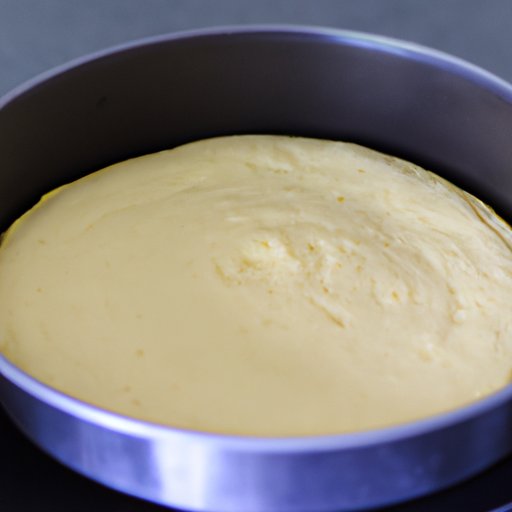
I. Introduction
Have you ever wondered whether baking a cake is a physical change or a chemical change? This question has sparked a lively debate among foodies and scientists alike. Some argue that baking a cake involves only physical changes, while others claim that chemical reactions are also at play. In this article, we’ll explore this question from a scientific perspective and help you understand the chemistry behind cake baking.
II. The Chemistry of Cake Baking: Exploring Physical Changes in Your Kitchen
In order to understand whether baking a cake is a physical change, it’s important to define what we mean by physical changes and chemical changes. Physical changes refer to alterations in the physical properties of a substance, such as its shape, size, or state of matter. Chemical changes, on the other hand, involve a fundamental alteration in the substance’s chemical composition.
So, how do these concepts apply to cake baking? Well, it turns out that cake baking involves both physical and chemical changes. Some of the changes that occur in the batter and during baking are physical changes, while others involve chemical reactions between the ingredients.
III. From Batter to Cake: Understanding the Science of Cake Baking
Let’s take a closer look at the basic ingredients of cake batter and their properties. Flour provides structure, sugar sweetens the cake and helps with browning, butter or oil adds richness and moistness, eggs provide structure and help emulsify the batter, and leavening agents like baking powder or baking soda cause the cake to rise.
As these ingredients are mixed together, physical and chemical changes begin to occur. The fat in the butter or oil coats the flour particles, preventing them from sticking together too much. The sugar dissolves in the liquid ingredients, forming a syrup-like solution. The proteins in the eggs begin to denature, or unfold, and link up with each other to form a network that adds structure to the batter.
But what about the role of heat in causing physical and chemical changes in the batter? Let’s explore that next.
IV. Baking a Cake: The Transition from Liquid to Solid and the Physical Changes Involved
As the cake bakes, the batter undergoes a variety of physical changes. It rises as the leavening agents release carbon dioxide gas, creating air bubbles that lighten the texture of the cake. The surface of the cake becomes browned and crispy due to the Maillard reaction, a chemical reaction between amino acids and reducing sugars that occurs at high temperatures.
Despite the presence of chemical reactions during the baking process, these changes are still considered physical changes rather than chemical changes. This is because the overall composition of the batter remains the same – it simply undergoes a change in physical state from liquid to solid.
V. Why Baking a Cake is a Physical Change: A Quick Science Lesson for Foodies
So, why is baking a cake considered a physical change? As we’ve discussed, the changes that occur during the baking process primarily involve alterations in the physical properties of the batter, rather than a fundamental change in its chemical composition. While some chemical reactions do occur, they don’t fundamentally alter the nature of the batter.
Some argue that the production of steam during the baking process is evidence of a chemical change, since water is being converted to a gas. However, this process is still considered a physical change because the chemical composition of the water molecules remains the same – only their arrangement within the cake has changed.

VI. The Magic of Cake Baking: How Heat Triggers Physical Changes in Batter
Now that we’ve established that baking a cake is primarily a physical change, let’s explore how heat triggers those changes. When the cake is placed in the hot oven, the heat causes the leavening agents to release carbon dioxide gas. This gas gets trapped in the batter’s protein network, causing it to expand and the cake to rise.
At the same time, the heat causes chemical reactions to occur between the amino acids in the protein network and the reducing sugars in the batter. These reactions produce a range of flavors and aromas, including the characteristic nutty, caramel-like flavor of a well-browned cake.
VII. Baking a Cake: Understanding Physical Changes in the Context of Cooking
While we’ve been focusing on the specific example of cake baking, the concepts of physical and chemical changes apply to other culinary processes as well. Frying, boiling, and roasting all involve a combination of physical and chemical changes in the food being prepared.
Understanding the science behind these changes is essential for achieving culinary success – whether you’re baking a delicate cake or cooking up a juicy roast.
VIII. Conclusion
In conclusion, baking a cake involves a combination of physical and chemical changes. While there are some chemical reactions that occur during the baking process, the overall nature of the batter remains the same – it simply undergoes a change in physical state from liquid to solid. Understanding the science behind these changes can help you become a better baker, and may even inspire you to experiment with your own cake recipes to observe these physical changes in action.





